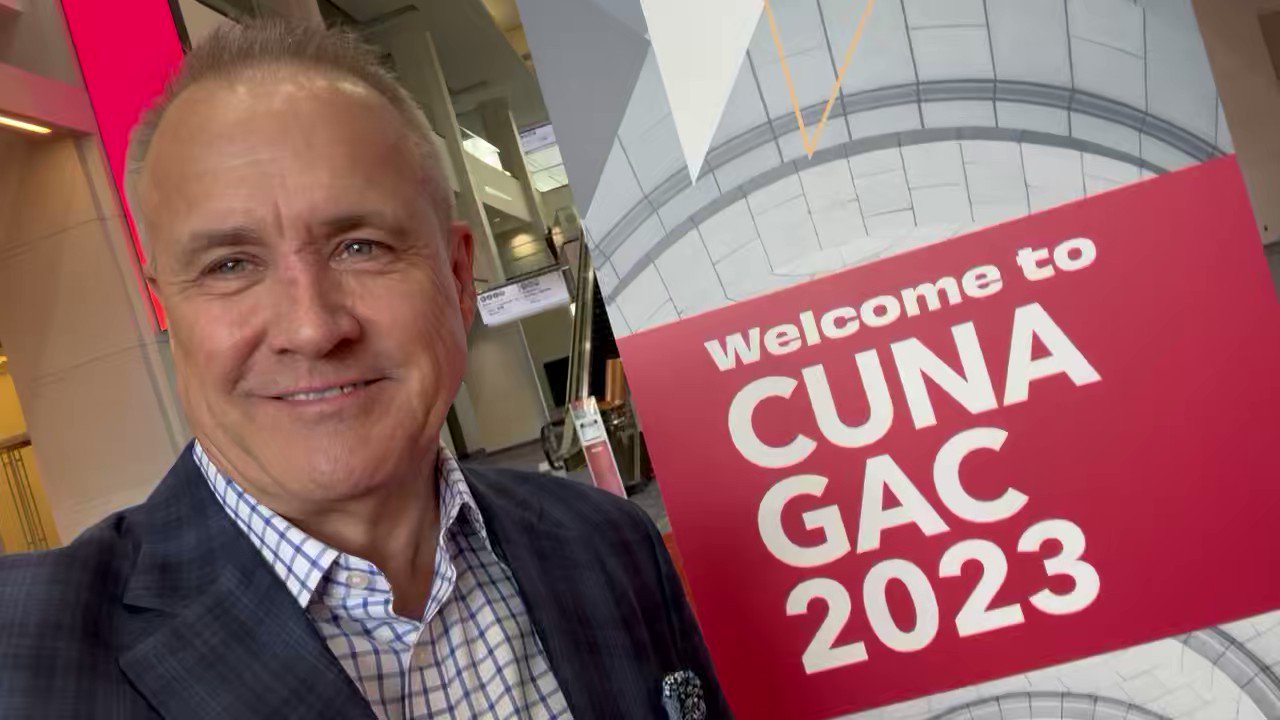CUNA CEO Jim Nussle was spitting fire Monday on the value of credit unions as he took center stage during CUNA’s annual Governmental Action Conference (GAC), emphasizing the cooperative movement’s mission to promote financial well-being for all while simultaneously communicating credit unions’ values of dependability, trust, loyalty, and commitment to the underserved throughout America.
Nussle energized the crowd by speaking to the heart of the credit union movement by reminding attendees of the banking deserts they’re left to fill after other institutions’ desertion. “Banks are abandoning communities, and the ones that are left aren’t locally-owned anymore,” he thundered. “Bank deserts are all over the place.”
He brought the receipts, too. According to a Federal Reserve report, from 2012 to 2017 banks shed 6,764 branch locations in the U.S. In 2022, the Fed identified more than 2,100 existing and potential banking deserts across the country, affecting approximately 34 million households at least partially outside the financial mainstream. Additionally, the majority of those banking deserts in the U.S. are located in rural areas, with less than 25 percent located in Metropolitan Statistical Areas (MSAs).
It’s obvious Nussle’s leadership emphasizes advocacy for the needs of credit union members, both rural and urban, due to the fact credit unions’ value inherently lies in knowing how to best serve the communities they inhabit.
“Credit unions were born to protect consumers and provide them safe access to financial services. We don’t require lectures from Washington bureaucrats,” Nussle continued. “We want to be able to accomplish the mission we’ve been chartered to fulfill. We are – and always have been – the original consumer protectors, and that’s not going to change.” From your lips to the Supreme Court’s ears, Mr. Nussle.
The bureaucrats Nussle spoke about in D.C. always want to know how credit unions have earned that “special status”, he says, which requires credit union executives and leaders to continue to maintain a philosophy of advocacy offense. That advocacy, he says, takes predominant shape in the form of hard data – showing the numbers – behind the credit union difference.
“Credit unions are 1.5 times more likely to lend to non-prime borrowers than banks. These non-prime borrowers have substantially higher payment performance than at banks. Credit unions have the lowest 60-plus day delinquency in the industry, for both prime and non-prime borrowers. That tells a great story of how we’re making a difference for people that need our help.”
Credit unions’ value goes national
That’s when CEO Nussle brought out the big guns. Just to ensure conference attendees understand this isn’t some credit union-centric speech, he showed a TV clip from the TODAY show with network senior personal finance correspondent Sharon Epperson discussing saving money and how credit unions were unmistakably more affordable than banks.
Nussle followed up the clip stating they have the numbers to confirm what Sharon said is backed up by data.
Two-thirds of American adults are financially unhealthy and living paycheck-to-paycheck, he said. To drive the point further, Nussle had the audience look both to their right and left, reminding them that two out of the three of them were struggling with financial health. This is where credit unions’ value comes directly into play.
It’s one thing to look at such numbers as abstract statistics when they’re not attached to living, struggling people working to provide for their families or themselves. But seeing and working with people every single day to give them the best life possible is what cooperatives strive for.
“At the center of everything we do is our member and our membership,” said Nussle. “That puts us on the same side as elected officials. We call them members, they call them voters.”
Prepping attendees for their meetings with policymakers during the GAC conference, Nussle had a simple ask of them, both this week and future efforts in advocacy offense: “Share your unique story, back it up with data,” he urged. “Ask to have the tools you need to have more for your members and communities and tell them that’s why you need it: to do more.”

So why the slowdown on credit union innovation, and how to overcome
It’s just too bad that Nussle’s inspiring and motivating words appear to be falling on deaf ears at the outset of 2023. At a time when consumers, credit union members especially, are searching for product innovation from their financial institutions, due to budget constraints in a year-long economic uncertainty credit unions are pulling back the reins on in-house development efforts.
It’s an ugly reality, but cooperatives have hit that wall, yet partnering with a CUSO may be the best way to work around those financial constraints.
According to a PMTS study based on surveys of nearly 4,300 consumers, 100 credit union executives, 50 fintech executives that offer products and services to cooperatives, the slowdown on innovation could not be more ill-timed.
Findings from the survey include the fact that over a quarter of credit union members, over 27 percent, would switch financial institutions to receive more advanced financial products or services. That dissatisfaction has in fact been rising for some time: in 2018, just 17 percent claimed they would switch for improved innovation.
What are these innovations, you ask? According to the study, preferences hinge on various forms of digital payment tools. Sixty-four percent of credit union members prefer better access to digital payment experiences from the credit union in which they have placed their trust and loyalty for so many years.
Easier access to funds is a highly-rated need from members across the country, particularly the underserved, while also reflecting demand from non-members (potential members?) who are searching for more financially stable, more financially healthy, options for small-dollar lending products.
Did we forget to mention, among credit unions in the past year, credit applications rose 71 percent?
QCash, for instance, represents an ever-evolving resource for credit union members to obtain access to ultra-fast and affordable small-dollar loans right from their mobile device. Inside of 60 seconds, QCash’s relational-decisioning AI takes a thorough 360-degree evaluation of the applicant in ways a traditional credit score never could. If approved, the system then deposits the requested amount in the applicant’s bank account. Again, all inside of one minute.
It appears we’re ahead of the game, too. “CUs, in turn, are moving aggressively to speed up the loan approval process: 53 percent of CU executives say they are making very or extremely significant steps to reduce the time to set up a loan for a borrower,” the survey found. “The remaining 47 percent say they are making slightly significant or somewhat significant steps to speed up the process.”
And the path out of this innovation slowdown for many is the increased use of more affordable credit union service organizations, or CUSOs, like QCash whose primary mission includes offering the financial resources that individual credit unions don’t have the budget or staff to develop and implement themselves.
“Many CUs are responding by seeking partners to help them develop products, and more than half are partnering with industry consultants and credit union service organizations (CUSOs) to roll out the products that members say they want,” the study said.
To buck the innovation slowdown occurring early in 2023 and get a step up on small-dollar lending, we invite you to contact us here or take a look at our free demo. To keep up with the latest product news or credit union industry developments, feel free to follow QCash on LinkedIn and Twitter.






